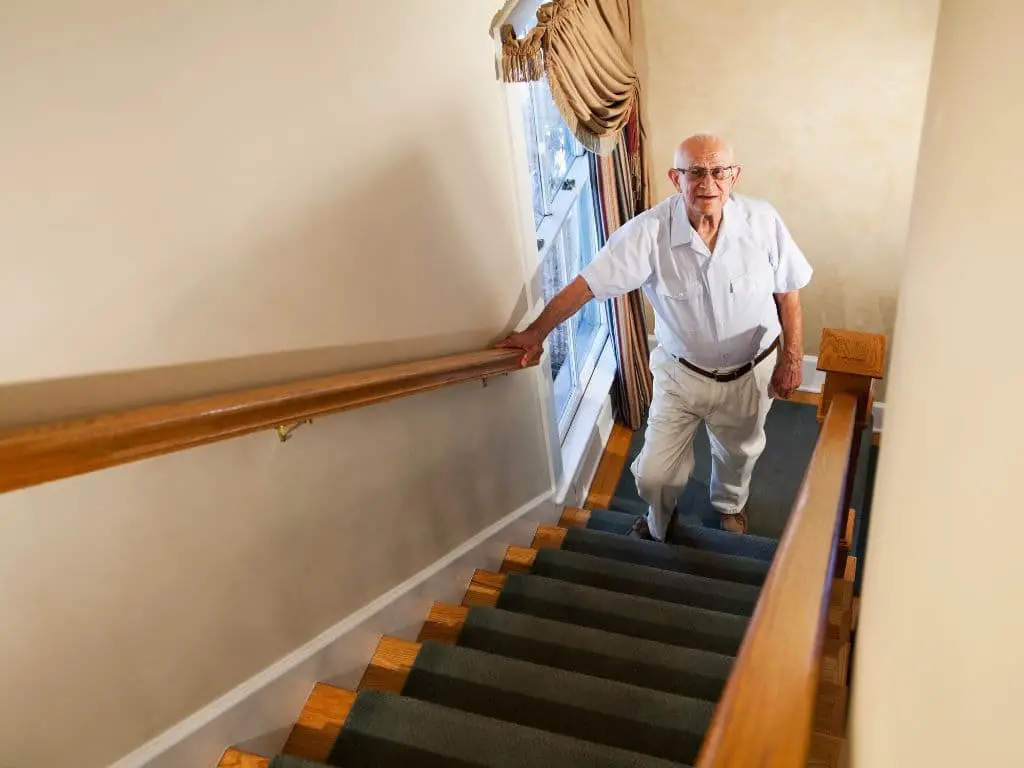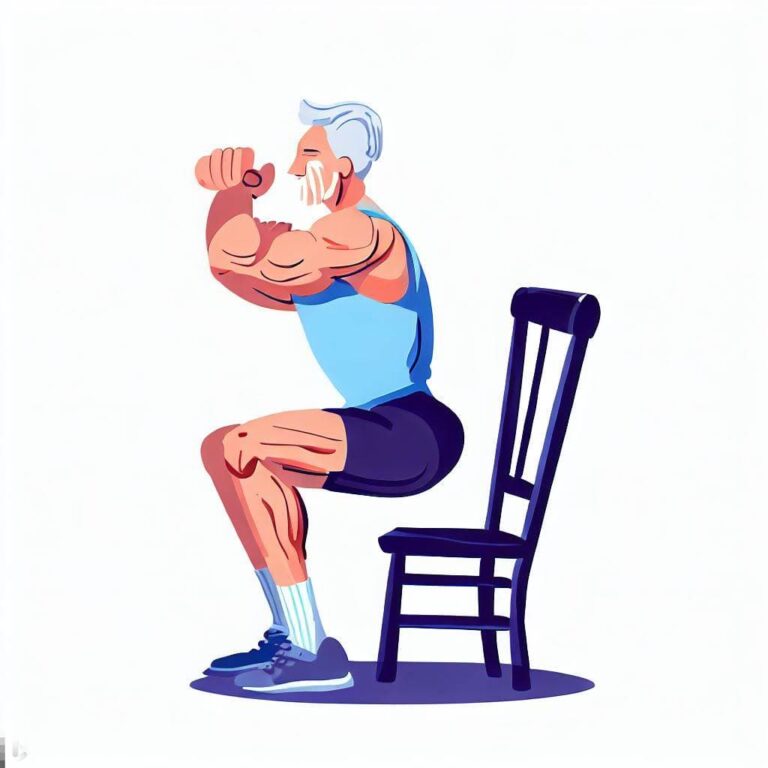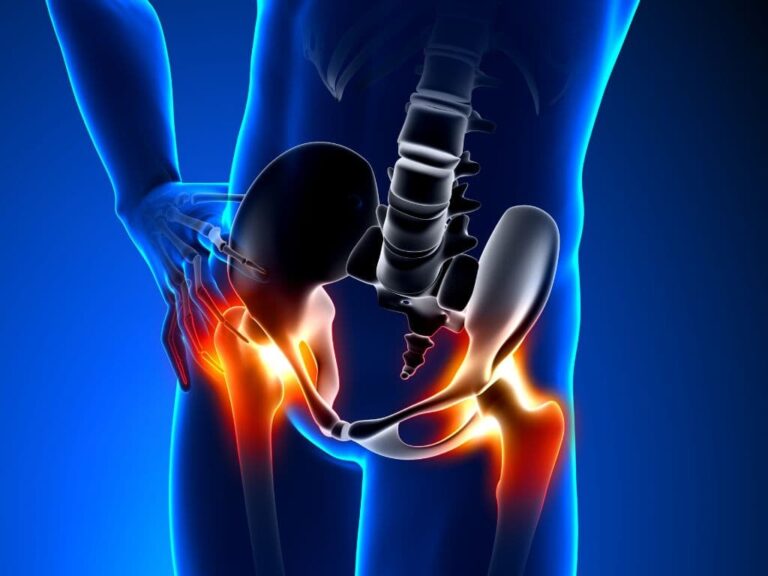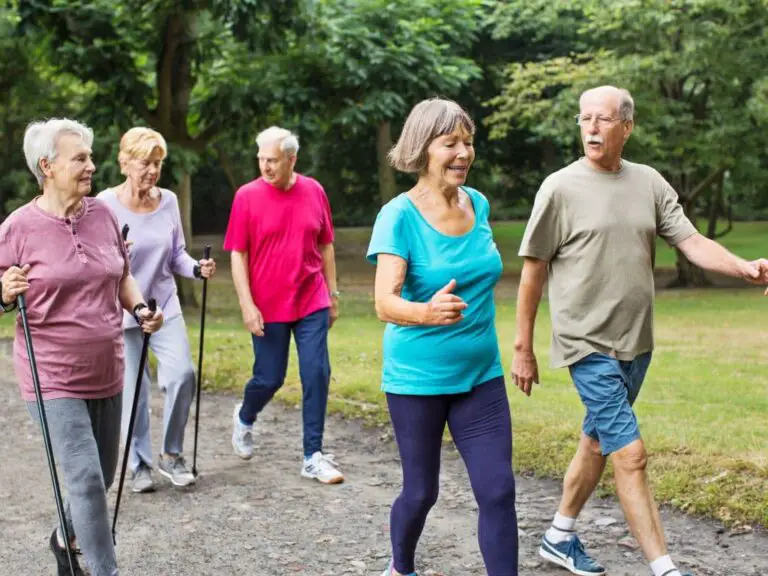At What Age Should You Stop Climbing Stairs?
As people get older, simple everyday tasks like climbing stairs can become more challenging. However, staying active and maintaining mobility as a senior is important for overall health and independence. So when should seniors stop using the stairs?
There isn’t a specific age when all seniors should stop climbing stairs. The decision depends on the individual’s physical condition, mobility, and overall health. Active seniors with good balance and coordination may continue stair climbing into their 70s or 80s. However, those with chronic conditions, muscle loss, or reduced bone density may find it difficult earlier.

At What Age Should Most Seniors Stop Climbing Stairs?
There is no definitive age when all seniors should stop climbing stairs. The aging process affects individuals differently, so the decision must be made on a case-by-case basis considering the person’s overall physical condition and mobility.
At what age do stairs become difficult?
Stairs can become difficult for seniors at different ages based on individual health and physical condition. However, generally, seniors may start experiencing challenges with stair climbing due to muscle loss, reduced bone density, and chronic conditions from their late 60s or early 70s. This can be earlier for those with significant health issues.
Seniors who are still active and healthy with good balance and coordination may be able to climb stairs well into their 70s or 80s. However, for seniors dealing with chronic conditions, muscle loss, and reduced bone density, stair climbing can become difficult much earlier.
What Factors Affect a Senior’s Ability to Climb Stairs?
Climbing stairs requires adequate strength in the legs, core, and upper body along with balance and coordination. As a person ages, they often experience a natural decline in muscle mass and bone density. This loss of mobility can make climbing stairs increasingly difficult and unsafe. Health conditions such as heart disease, arthritis, and neurological conditions can also impair someone’s physical abilities and stamina for stair climbing. Assessing a senior’s overall fitness level, including their risk of falls, is key.
What are the Benefits and Risks of Stair Climbing for Seniors?
For capable seniors, continuing to use stairs can provide valuable physical activity and allow them to maintain independence in the home. Climbing stairs engages multiple muscle groups at once, helping to maintain strength and cardiovascular fitness. However, stairs also present a major fall risk as limited mobility increases. Stair climbing requires coordinated footsteps and grip strength, which can deteriorate with age. Understanding when diminished capabilities or chronic conditions outweigh the benefits of stairs is crucial.
How Can Seniors Make Stairs Safer for Themselves?
Seniors who want to keep using stairs can implement modifications to reduce fall risks. Installing a stair lift or hand rails provides support. Improving lighting and minimizing clutter in stairwells also helps. Getting guidance from a physical therapist allows seniors to evaluate and improve their specific strength and balance needs. And teaching seniors proper stair climbing techniques, like using the handrails and avoiding rushing, is key.
What are Some Exercises that Seniors Can Do to Improve Their Strength and Balance?
Special exercises for seniors can help maintain and even improve the mobility, stability, and stamina required for stair climbing. Low-impact strength training such as using resistance bands or light weights helps build critical lower body and core muscles. Balance exercises like heel-to-toe standing or tandem walking also help seniors aging in place. Consulting a physical therapist allows seniors to get personalized exercise programs to target stair climbing skills.
What are the Signs that a Senior Should Stop Climbing Stairs?
Seniors who struggle with steps or appear unsteady when climbing may need to avoid stairs altogether. Difficulty lifting the feet sufficiently or reliance on the handrails indicates decreased strength and mobility. Shortness of breath, dizziness, or rapid heart rate while climbing can also signal the need to stop. Seniors who have fallen on the stairs previously or express fear about stairs likely should switch to safer alternatives.
What are Some Resources Available to Help Seniors Stay Safe and Independent at Home?
Organizations like AARP offer stair safety tips for seniors looking to proactively reduce fall risks. Local aging services provide resources on home modifications like installing stair lifts and handrails that make stairs accessible longer. Physical and occupational therapy for seniors also helps maximize capabilities. Assessing home layout and considering relocated bedrooms or bathrooms to avoid stairs may become necessary as well.
Conclusion
Climbing stairs requires strength and coordination that can diminish as seniors age. However, avoiding stairs completely can reduce activity levels and independence. With some tailored modifications and exercised focused on building critical mobility skills, many older adults can continue safely and confidently using stairs well into their later years. Taking a proactive approach allows aging seniors to balance meaningful activity, health, and reduced risks.
Frequently Asked Questions
-
At what age do stairs become difficult?
What is the average age of a person? Surprised to learn that many activities are more challenging after the age of 60. You are not the only one who finds activities such as walking up stairs or taking the stairs too strenuous if you fall within the 60-plus age bracket.
-
How do I get rid of old lady arms?
You can tone and lose fat after age 60 or later. You can tone your arms by doing aerobic exercises, as well as strength training to build and tone the muscles. For health clearance, consult your doctor before you start.
-
Can you still build muscle at 70?
Seniors can still bulk up on muscle by pressing iron. As we age, our muscle mass drops at astonishing rates. Researchers found that lifting weights can help people over 50 not only preserve but even increase muscle mass.
-
What does atrophy in the leg feel like?
How does muscle atrophy affect your body? You may experience tingling or numbness in the arms and legs if you suffer from muscle atrophy.
-
How fit should a 70 year old be?
You should be able walk between 480 to 615 yards for a woman and 545 to 680 meters for a man by the time you turn 70. You are considered dangerously ineligible if you can walk less than 350 meters. Your physician should help you design a personal fitness program.
-
At what age does walking become difficult?
Between the ages 60-69, there is a 10% prevalence rate of balance and gait disorders. The number of people over 80 has increased to 60%. A fall affects 30% to 40% of 65-year-olds. It increases by 50% for those aged 80 and older.
-
Can flabby arms be toned after 60?
Your body loses muscle mass as you get older. You can still tone and lose fat after age 60 or later. You can tone your arms by engaging in strength training to build and tone the muscles.
-
Does B12 help balance?
Inadequate coordination. A B12 deficiency can cause ataxia (or impaired balance and coordination). B12 deficiencies can lead to difficulty in walking or balancing.
-
Can sitting cause muscle atrophy?
Sitting all day is not a good idea. Your lower muscles aren’t going to be able to support you. Muscle atrophy is when these muscles weaken. Your body could be injured if you don’t have strong glute and leg muscles.
-
Why do older people get cold?
The fat layer under the skin is thinner in older adults, which makes them more vulnerable to cold. Diabetes, kidney disease, and peripheral artery disease all can affect blood flow. This could lead to a lower temperature.






